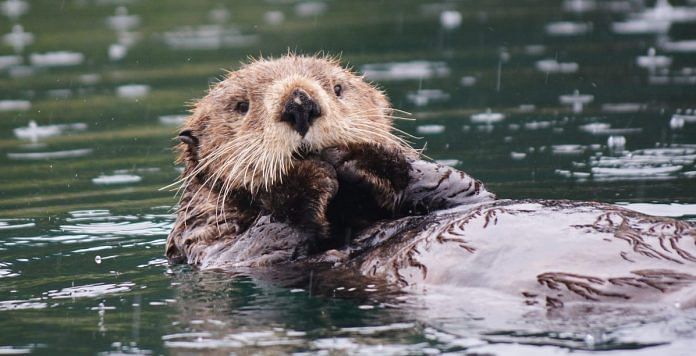Scientists investigating declines in California’s kelp forests credit otters with helping to protect kelp – a species of seaweed – through their fondness for eating sea urchins. But not all urchins are equal to the otters, which zone in on the healthy nutritious ones and leave others behind.
Joshua Smith, a graduate student of the University of California, Santa Cruz (UCSC), started investigating the kelp forests in 2014. He wanted to know why patches of kelp were able to survive on the seafloor alongside completely barren areas covered in purple sea urchins.
“Here in Monterey Bay, we now have a patchy mosaic, with urchin barrens devoid of kelp directly adjacent to patches of kelp forest that seem pretty healthy,” Smith says.
In these “urchin barrens”, which cover vast areas of the coast, the seafloor is carpeted with sea urchins and little else.
Predator power
Sea otters are a type of dominant predator known as a “keystone species” that maintain an ecosystem’s balance by controlling populations of prey – in this case sea urchins.
“We wanted to know how did this sea urchin outbreak happen where there are so many otters, how did the otters respond, and what does that mean for the fate of kelp forests here on the Central Coast?” Smith explains.
Over three years, Smith and a team of sea otter researchers at UCSC, the US Geological Survey and the Monterey Bay Aquarium conducted intensive underwater surveys.
The study built on decades of long-term monitoring of sea otter populations and kelp forest ecosystems along the California coast.
While the proliferation of urchins had led to a boom in the otter population, the ravaged urchin barrens remained. Smith and team discovered why – the animals were going after the bigger, more energy-rich urchins in the areas of rich kelp growth.
“So the otters are ignoring the urchin barrens and going after the nutritionally profitable urchins in the kelp forest,” Smith explains.
It’s all connected
The study, published in the Proceedings of the National Academy of Sciences, underlines the importance of animal behaviour in maintaining ecosystems.
“So much of this is driven by behaviour – the urchins shifting their behaviour to active foraging, and the otters choosing to prey on healthy urchins in the kelp forest,” Smith says. “And these behavioural interactions have implications for the overall fate of the ecosystem.”
The United Nations Environment Programme (UNEP) explains the importance of ecosystems in its explanation of ‘domino effect’ biodiversity loss and why it matters.
At least 8 million species of plants and animals on earth today – including humans – live together in ecosystems. These are geographic areas that can be as large as a desert or as small as a pond.
The whole surface of Earth is a series of connected ecosystems that often rely on each other in unexpected ways.
“For example, each year the Amazon Rainforest is fertilized from phosphorous contained in around 22,000 tons of dust carried by the wind from the Sahara Desert thousands of miles away,” UNEP says.
New nature
In its report, The Future of Nature and Business, the World Economic Forum sets out 15 transitions across three human systems to achieve a carbon-neutral, ‘nature-positive’ economy and halt biodiversity loss by 2030.
The three human systems are food, land and ocean use; infrastructure and the built environment; and extractives and energy.
“Together they drive the threats which endanger almost 80% of the total threatened and near-threatened species,” the Forum says.
Proposed changes include reducing the footprint of agriculture and fishing on ecosystems and sustainably managing forests to reduce the impact of logging on biodiversity.
Combined, the Forum says the 15 transitions it proposes could generate up to $10.1 trillion in annual business value and create 395 million jobs by 2030.
Victoria Masterson is a Senior Writer, Formative Content
This article was originally published in the World Economic Forum.
Also read: There are up to 14 million tonnes of microplastics on the seafloor — worse than we thought



